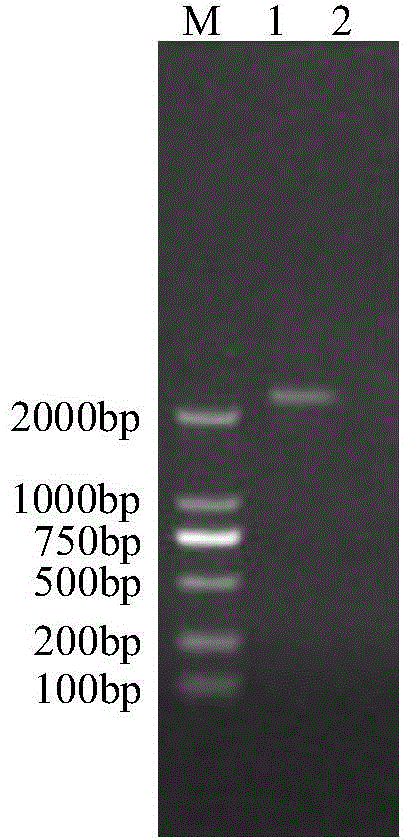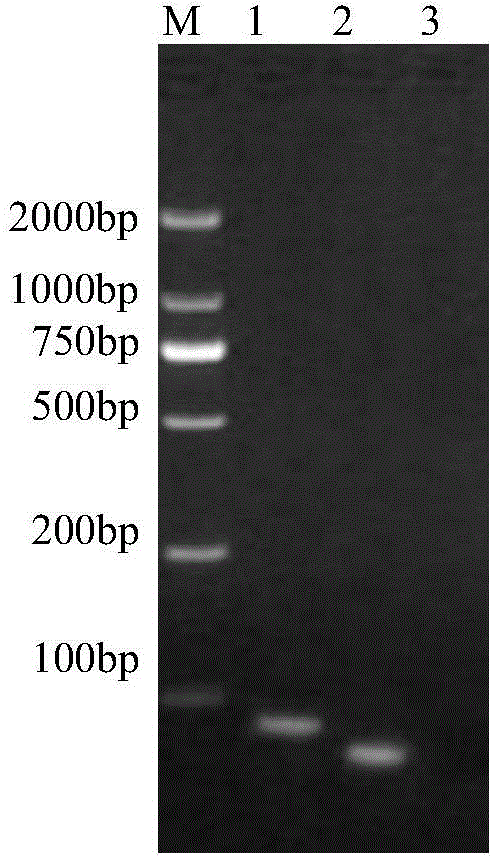Bovine rotavirus VP8* subunit recombinant chimeric protein and application thereof
A bovine rotavirus and chimeric protein technology, applied in the fields of molecular biology and genetic engineering, can solve problems such as increased vaccine production costs, difficulties in vaccine development and production, and achieve the goal of improving immune efficacy, low cost, and reducing economic losses Effect
- Summary
- Abstract
- Description
- Claims
- Application Information
AI Technical Summary
Problems solved by technology
Method used
Image
Examples
Embodiment 1
[0029] Embodiment 1 Contains the construction of the expression vector of target fragment
[0030] The material used was bovine rotavirus of genotype G5P[6], which was cultured with primary African green monkey kidney (AGMK) cells. The medium used was EMEM, in which trypsin was added to a final concentration of 0.5 μg / ml, penicillin 100 IU / ml, streptomycin 100 μg / ml, amphotericin B 2.5 μg / ml. The formula of EMEM medium (high glucose type) is shown in Table 1.
[0031] Table 1 EMEM medium formula
[0032]
[0033] (1) Primer design
[0034] According to the bovine rotavirus VP4 gene sequence published in GenBank (gene accession number: JF693062.1), primers were designed using Oligo7.0 and DNAStar software, and the primer sequences are shown in Table 2. Among them, the annealing of the first pair of primers VP8*-ab-0-F and VP8*-ab-0-R is used as the template for subsequent amplification, a and b represent aa 1-11 and aa 218-235 respectively), the underlined part in italics...
Embodiment 2
[0056] Example 2 Expression of bovine rotavirus VP8* subunit recombinant chimeric protein
[0057] Using the heat shock method, the expression plasmid pET28a-P2-VP8*-(ab) 3 , pET28a-P2-VP8*-ab, pET28a-VP8*-(ab) 3 , pET32a-VP8*-ab, pET32a-VP8*-a and pET28a-VP8* were transformed into E.coli BL21(DE3) competent cells. Pick a single clone from the agar plate and inoculate it in LB liquid medium containing 50 μg / ml kanamycin (pET28a vector) or 50 μg / ml ampicillin (pET32a vector) (add 2% glucose, 1% ethanol and 2 %glycerin). When the absorbance value at 600 nm reached 0.5, IPTG was added to a final concentration of 0.5 mM, and the protein expression was induced overnight at 18°C. Then centrifuge at 10000g at 4°C for 15min to collect the recombinant E.coli cells, and store them at -80°C for later use (recombinant protein SDS-PAGE electrophoresis results are as follows: Figure 6 A and Figure 6 As shown in B, P2-VP8*-(ab) 3 The amino acid sequence is shown in SEQ ID No.4).
Embodiment 3
[0058] The Western blot detection of embodiment 3 recombinant protein
[0059] After 15% SDS-PAGE electrophoresis, the expressed recombinant protein was transferred to PVDF membrane, blocked with PBST containing 5% skim milk at 37°C for 1 hour, washed 3 times with PBST, and anti-His-tag monoclonal antibody diluted 1:2000 Incubate overnight at 4°C, wash with PBST three times, dilute HRP-labeled goat anti-mouse IgG at 1:5000 and incubate at 37°C for 1 hour; wash with PBST three times, develop color with DAB ( Figure 7 ).
PUM
 Login to View More
Login to View More Abstract
Description
Claims
Application Information
 Login to View More
Login to View More - R&D
- Intellectual Property
- Life Sciences
- Materials
- Tech Scout
- Unparalleled Data Quality
- Higher Quality Content
- 60% Fewer Hallucinations
Browse by: Latest US Patents, China's latest patents, Technical Efficacy Thesaurus, Application Domain, Technology Topic, Popular Technical Reports.
© 2025 PatSnap. All rights reserved.Legal|Privacy policy|Modern Slavery Act Transparency Statement|Sitemap|About US| Contact US: help@patsnap.com



